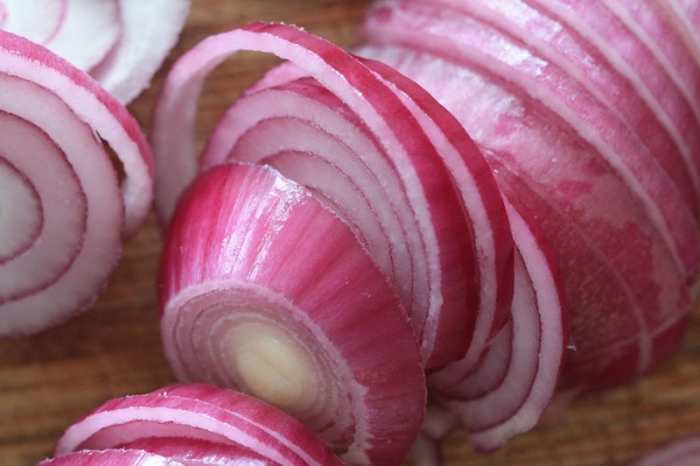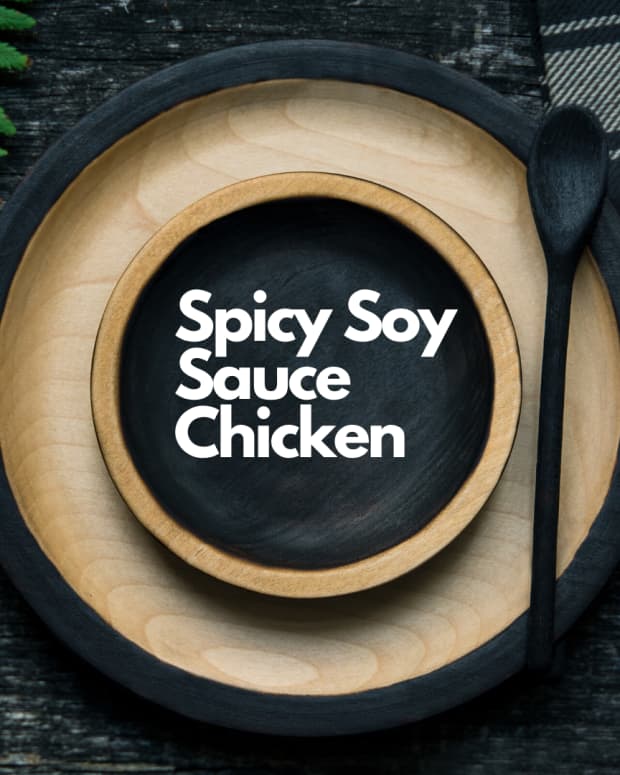How to Chop Onions Without Crying
Scientist and author, Beth is also a keen home cook. She enjoys trying new recipes.
How to Cut Onions Without Tears
It’s such a useful vegetable, but the tears it induces are no laughing matter. If you are a susceptible individual, as soon as you cut into an onion, your eyes start to smart, and your nose begins to run. The tears well up, and soon you are properly crying with reddened eyes and a streaming nose. However, a few simple steps can help you prevent this from happening.
- Use a very sharp knife.
- Chill the onions
- Run the knife under cold water
- Keep your hands cool
- Use fresh onions
- Make sure the room is well ventilated
Why Do Sharp Knives Reduce Onion Tears?
Professional chefs are constantly sharpening their knives. Not only does this make slicing and dicing easier, but it also helps the chef cut cleanly through the cell walls of the vegetables. A blunt knife squashes and pulverizes these, making them discharge more juice that in turn as a gas, irritates your eyes. I find it useful to keep a knife sharpener alongside my kitchen utensils. I recommend this Mueller sharpener. It’s compact and easy to use, and it helps improve my knife skills too.
How to Finely Chop an Onion: Gordon Ramsay
Why Do Onions Make You Cry?
When you chop, slice or cut into an onion, volatile chemicals are released that irritate your eyes and nose. The resulting tears and runny nose are the body’s defensive reaction to this gas. This is a natural reaction and is not harmful, although some people react more strongly to onions than others.
When preparing onions for cooking or for eating raw, most people want to stop themselves from crying. To reduce tear formation you need to dilute or remove the irritant from your immediate surroundings. This can be done by following a few simple tips.
Onions produce an irritant syn-Propanethial-S-oxide. It stimulates the eyes’ lachrymal glands to release tears.
1. Lachrymatory-factor synthase is released into the air as an onion is cut.
2. The synthase enzyme converts the amino acids sulfoxides of the onion into sulfenic acid.
3. The unstable sulfenic acid rearranges itself into syn-Propanethial-S-oxide.
4. Syn-Propanethial-S-oxide gets into the air and comes in contact with our eyes. The lachrymal glands become irritated and produce tears.
— Science Reference Section, Library of Congress
Cool Hands, Chilled Onion, Cold Knife
Heat increases the speed at which onion juices evaporate and become an airborne gas. If you keep all parts of the chopping process cold, then the irritant chemical will take longer to reach your eyes and nose, and be in a lower concentration.
Keep fresh onions in the crisper drawer at the bottom of your fridge. Just before starting to cut the onions, rinse your hands and knife in cold water. Don’t dry them, but slice the vegetables with wet hands. This helps keep the onion juice in liquid form and minimizes gas formation.
Use Fresh Onions and Cut the Root End Last
- The irritant chemical (syn-Propanethial-S-oxide) is produced by onions as a defense against being eaten whilst in the ground. It is concentrated at the root end of the bulb, so leave this part uncut until the very last moment.
- As onions age, they dry out and so the chemical becomes more concentrated. Buy your onions in small quantities (and preferably locally grown) so that they are as fresh as they can be when you use them.
- In general, mild flavored onions contain less syn-Propanethial-S-oxide than the stronger flavored varieties, so opt for these if you know you are hyper-sensitive to slicing onions.
Face Shield or Eye Mask for Those Severely Affected
For most people a combination of a sharp knife, a cool working environment, and a kitchen extract fan, will keep onion tears at bay. However some choose to wear an eye mask or face shield to prevent the irritant from reaching their eyes. A full gas mask (see image below from the First World War) is probably a bit extreme, but there are plenty of face shields on the market that can give the desired protection. Although intended as a protection against coronavirus, they protect against aerosol transmission and so can offer a solution to any gaseous eye irritant.
Some Other (Unproven) Ways to Stop Onion Crying
- Wear a pair of swimming goggles. However, these can mist up and so are not very practical when cooking.
- Keep a piece of bread in your mouth. This seems unlikely to work, but some people swear by it.
- Turn the sliced side of the onion away from you. This is hard, if not impossible to do; the whole aim of dicing is to make every part of the onion a small sliced piece.
- Buy one of the new onion varieties that have been bred specifically to be odorless and not emit irritant chemicals. Unfortunately, these are difficult to find and, so far, do not seem to have been a commercial success.
If all else fails you can buy packs of ready chopped fresh onion. They are a bit pricy if you like a lot of onion in your food, but are worth the cost if you really hate to cry as you chop onions.
This content is accurate and true to the best of the author’s knowledge and is not meant to substitute for formal and individualized advice from a qualified professional.


















